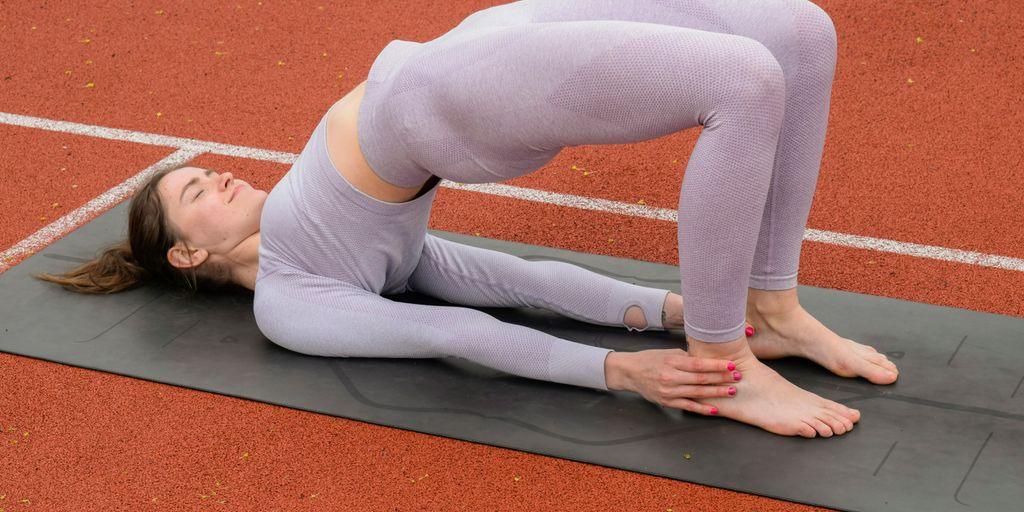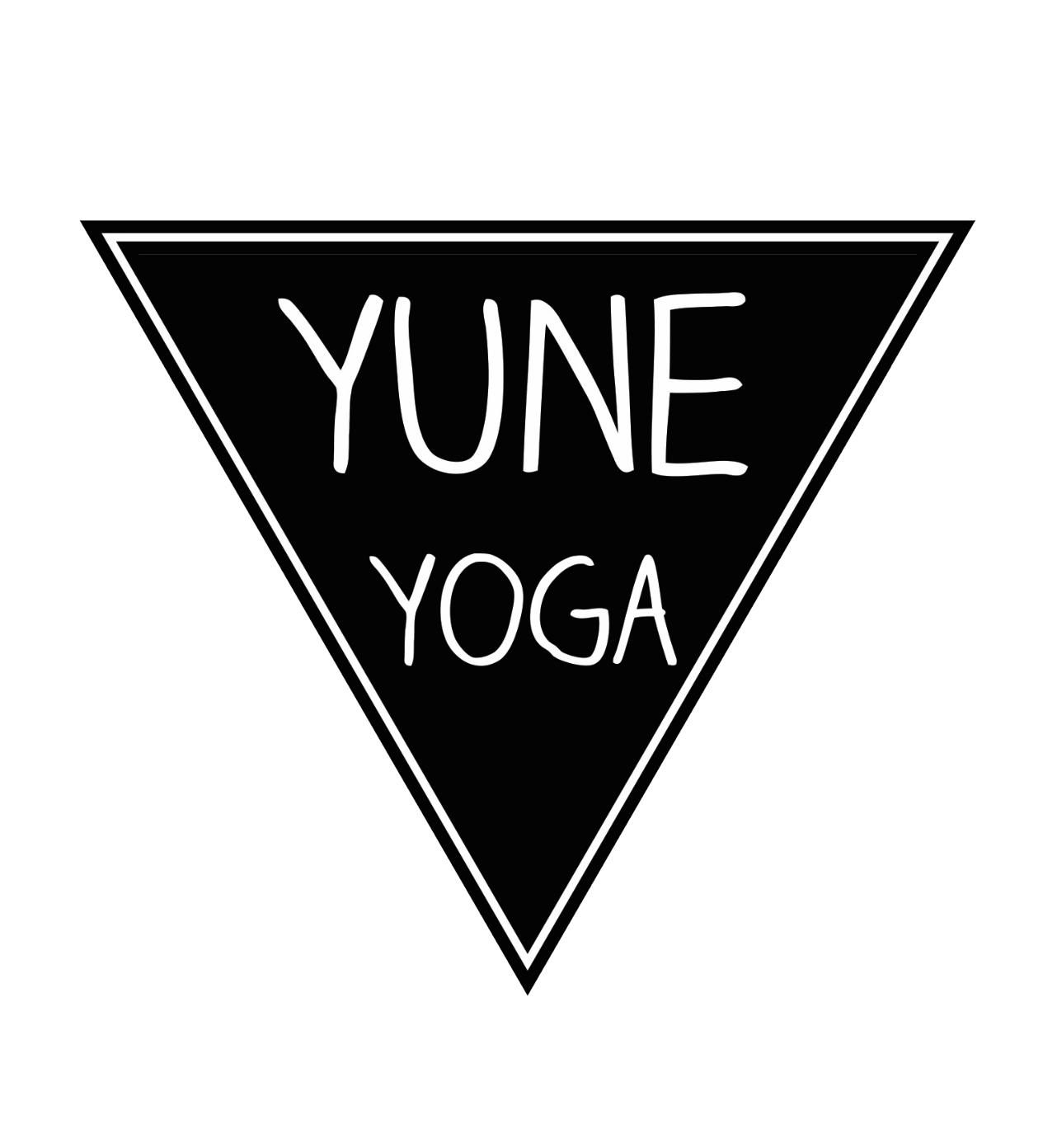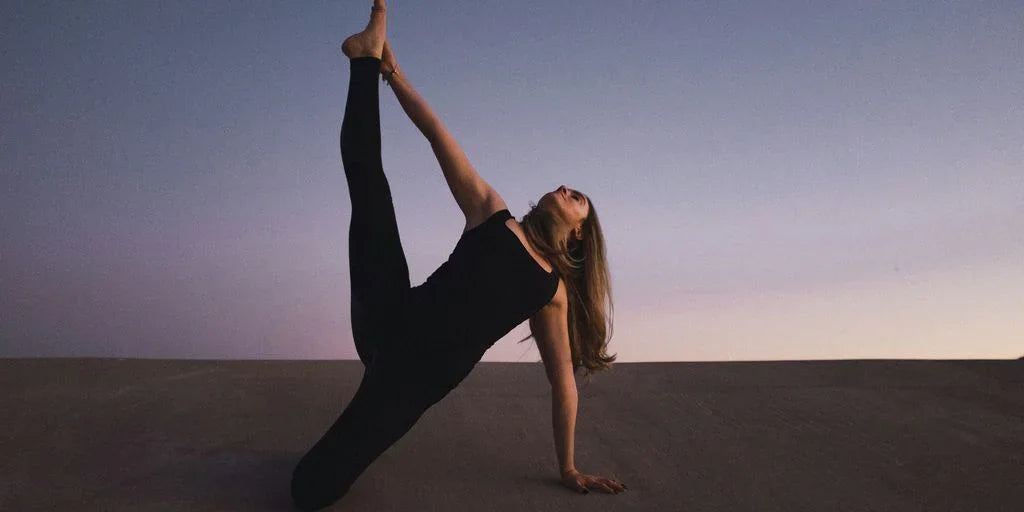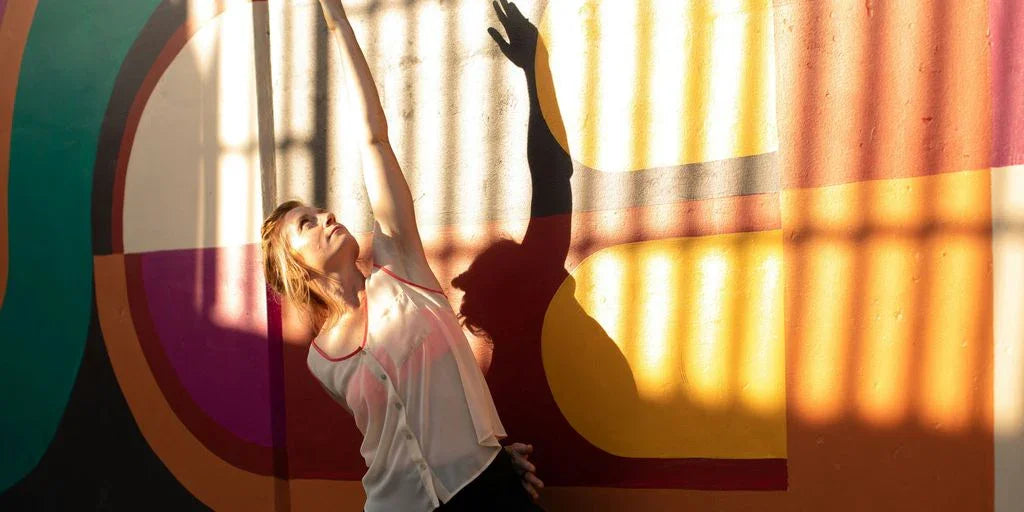
Mastering Your Practice: How to Use Yoga Blocks for Enhanced Stability and Deeper Stretches
Ever wonder how some yogis seem to hold those tricky poses with such ease? Or how they stretch so far? A lot of times, the secret isn't magic flexibility, but a simple tool: the yoga block. These handy props can totally change your practice, whether you're just starting out or have been doing yoga for years. They help you stay steady and get deeper into stretches without feeling like you're going to snap. Let's talk about how to use yoga blocks to make your time on the mat even better.
Key Takeaways
- Yoga blocks help improve your posture and keep your body lined up right.
- They let you stretch more without overdoing it.
- Blocks give you support, making tough poses easier for everyone.
- There are different kinds of blocks, like cork, foam, and wood, each good for different things.
- Learning how to use yoga blocks can really improve your practice, making it safer and more effective.
Understanding the Benefits of Yoga Blocks
Yoga blocks? I used to think they were just for beginners or people who weren't "flexible enough." Boy, was I wrong! They're actually super useful for everyone, no matter your level. They can really change how you experience your practice. Let's get into why they're so great.
Improving Posture and Alignment
Yoga blocks can be your best friend when it comes to getting your alignment right. It's easy to slouch or twist without even realizing it, especially in poses like Triangle or Half Moon. Blocks help you find the correct position, which not only feels better but also prevents injuries. Think of them as training wheels for your body, guiding you into the right shape. I've noticed a huge difference in my posture since I started using them regularly. They help me be more aware of my body in space.
Enhancing Flexibility and Depth
Okay, so you might think blocks are only for people who aren't flexible, but they can actually help you deepen your stretches safely. Instead of forcing yourself into a pose, you can use a block to support you while you gently increase your range of motion. For example, in a seated forward fold, placing a block under your hands allows you to relax and lengthen your spine without straining. It's all about finding that sweet spot where you feel a good stretch without pushing too hard. Using yoga block poses can help you achieve this.
Providing Support for All Levels
One of the coolest things about yoga blocks is how versatile they are. Whether you're a total newbie or a seasoned yogi, blocks can make poses more accessible and comfortable. For beginners, they can shorten the distance to the floor, making poses like Downward Dog or Warrior poses feel less intimidating. For more advanced practitioners, blocks can add a new challenge by allowing you to explore deeper variations of poses. It's all about adapting the pose to your body and your needs. Plus, they're great for restorative yoga, providing support and allowing you to fully relax into each pose. I've even used them under my hips in Savasana for extra comfort!
Yoga blocks aren't just props; they're tools that can help you get more out of your practice. They can help you find better alignment, deepen your stretches, and make yoga more accessible, no matter your level. Don't be afraid to experiment with them and see how they can enhance your experience.
Choosing the Right Yoga Block Material
Okay, so you're ready to get some yoga blocks, but did you know they come in different materials? It's not just about color! The material affects how the block feels, how stable it is, and even how eco-friendly it is. Let's break down the most common types.
Exploring Cork Block Advantages
Cork blocks are pretty cool. They're made from the bark of cork trees, which makes them a sustainable choice. They're also super durable and offer a really firm grip. This is great if you need a lot of stability, especially in standing poses. They might be a bit heavier than foam, but that weight can actually be a good thing, making you feel more grounded. Cork blocks are great for stability in grounding poses.
Utilizing Foam Blocks for Comfort
Foam blocks are probably what most people think of when they picture yoga blocks. They're lightweight, soft, and usually the most affordable option. They're awesome for beginners or anyone who wants a little extra cushioning. Foam blocks are especially nice in restorative poses where you're holding a position for a long time. However, they're not as stable as cork or wood, so keep that in mind if you need a lot of support. They are great for beginner-friendly yoga.
Selecting Wooden Blocks for Firmness
Wooden yoga blocks are the least common, but they have their fans! They're super firm and sturdy, which some people really like. They don't compress at all, so you get consistent support. They're also really durable and can last a long time. The downside? They can be a bit slippery, and they're definitely not as comfortable as foam. Plus, they're usually the most expensive option. Wooden blocks are often preferred by advanced practitioners.
Choosing the right yoga block material really comes down to personal preference and what you need it for. Think about what kind of poses you do most often, how much support you need, and what feels good to you. Don't be afraid to try out different types to see what works best!
How to Use Yoga Blocks for Stability
Yoga blocks aren't just for making poses easier; they're also fantastic for building stability and proper alignment. I remember when I first started using them, I was surprised at how much more grounded and secure I felt in certain poses. It's all about finding that sweet spot where you're supported but still actively engaging your muscles. Let's explore some ways to use these handy props to enhance your stability.
Supporting Hands in Downward Dog
Downward Dog can be tough on the wrists, especially if you're new to yoga or have wrist issues. Using blocks under your hands can make a world of difference. It reduces the angle of your wrists, alleviating pressure and allowing you to focus on lengthening your spine.
Here's how I usually set it up:
- Place two blocks shoulder-width apart where your hands would normally go in Downward Dog.
- Grip the blocks with your hands, fingers pointing forward.
- Press firmly into the blocks, engaging your arms and shoulders as you lift into Downward Dog.
This slight elevation can also help you achieve a deeper stretch in your shoulders and upper back. It's a game-changer!
Assisting in Balancing Poses
Balancing poses can be super intimidating, but blocks can provide that extra bit of support you need to build confidence. For example, in Half Moon Pose, placing a block under your lower hand can help you maintain balance and proper alignment. It's like having a little safety net!
Here's a simple way to use a block in balancing poses:
- Position the block a comfortable distance in front of you, slightly to the side of your front foot.
- As you lean into the pose, place your hand on the block, adjusting the height as needed.
- Focus on engaging your core and maintaining a steady gaze to improve balance.
I've found that using blocks in balancing poses not only provides physical support but also boosts my mental confidence. Knowing that the block is there allows me to push myself a little further without fear of falling.
Blocks are useful for improving balance in poses like Crow Pose.
Elevating the Body in Seated Poses
If you struggle with tight hips or hamstrings, seated poses can feel like torture. Sitting on a block can elevate your hips, making it easier to maintain a straight spine and reducing strain on your lower back. I use this trick all the time in poses like Easy Pose or Staff Pose.
Here's how to use a block in seated poses:
- Fold your legs into your desired seated position.
- Place a block (or two, if needed) under your sit bones.
- Adjust the height of the block until you feel a comfortable lift in your hips and a lengthening in your spine.
This simple adjustment can make seated poses much more accessible and enjoyable. It's all about finding what works best for your body!
How to Use Yoga Blocks for Deeper Stretches
Yoga blocks aren't just for making poses easier; they can also help you go deeper into stretches you might already be comfortable with. The key is using them strategically to support your body and allow for a greater range of motion. It's all about finding that sweet spot where you're challenged but not straining.
Deepening Forward Folds
Forward folds can be tough, especially if you have tight hamstrings. Yoga blocks can be a game-changer here. Instead of rounding your back to reach the floor, place one or two blocks in front of your feet and rest your hands on them. This does a few things:
- It allows you to keep your back straighter, which is better for your spine.
- It reduces the strain on your hamstrings, letting you gradually increase the stretch.
- It helps you focus on lengthening your spine rather than just reaching the floor.
I've found that starting with the blocks on the highest setting and then lowering them as my flexibility improves is a great way to track progress. It's a subtle but effective way to see how far you've come. Using yoga blocks in this way can really transform your forward fold practice.
Enhancing Hip Openers
Hip openers, like pigeon pose or butterfly pose, can also benefit from the use of yoga blocks. In pigeon pose, for example, placing a block under your hip can provide support and allow you to relax more deeply into the stretch. This is especially helpful if your hip doesn't naturally rest on the floor. It's like giving your hip a little assist so it can open up more fully.
Here's how I like to use blocks in hip openers:
- Start in the pose as usual.
- Notice where you feel the most tension.
- Place a block (or two, if needed) under the part of your body that's feeling the most strain.
- Relax and breathe into the stretch.
It's important to remember that the goal isn't to force anything. The blocks are there to support you, not to push you beyond your limits. Listen to your body and adjust the height of the blocks as needed.
Extending Reach in Standing Poses
Standing poses like triangle pose or side angle pose can also be deepened with the help of yoga blocks. In triangle pose, for instance, placing a block on the inside of your front foot can give you something to reach for without compromising your form. This allows you to maintain a straight spine and open chest, which are key to getting the most out of the pose. It's like having an extra-long arm for the day!
Here's a quick comparison of using a block versus not using a block in triangle pose:
| Feature | Without Block | With Block |
|---|---|---|
| Spine Alignment | Often rounded to reach the floor | Straighter, more aligned |
| Chest Opening | Can be closed off due to reaching | More open and expansive |
| Hamstring Strain | Increased strain due to overreaching | Reduced strain, allowing for deeper stretch |
| Overall Depth | Limited by flexibility and reach | Enhanced, allowing for greater range of motion |
Experiment with different heights to find what works best for you. You might be surprised at how much of a difference a simple block can make in standing poses.
Integrating Yoga Blocks into Your Practice
Yoga blocks aren't just for beginners; they're useful for yogis of all levels. The key is understanding how to weave them into your existing routine to get the most out of each pose. It's about finding that sweet spot where the block assists without becoming a crutch. Think of them as training wheels that you can take off and put back on as needed.
Adapting Poses for Beginners
For those just starting out, yoga blocks can be a game-changer. They bring the floor closer, making poses more accessible and less intimidating.
- Use blocks under your hands in Downward Dog to reduce the stretch in your hamstrings.
- Place a block under your hips in seated poses to help maintain a straight spine.
- Try using blocks in modified versions of standing poses like Triangle to focus on alignment.
Yoga blocks are great for beginners because they allow you to experience the shape of the pose without pushing yourself too far, too soon. This helps build confidence and prevents injuries.
Refining Advanced Techniques
Even experienced practitioners can benefit from blocks. They can be used to deepen stretches, improve alignment, and explore new variations of familiar poses. For example, in Half Moon pose, a block under your bottom hand can help you maintain balance and focus on opening your chest. Or, in Shoulderstand, blocks can support your shoulders, creating more space for your neck.
Applying Blocks in Restorative Yoga
Restorative yoga is all about relaxation and rejuvenation, and blocks can play a big role here. They provide support in long-held poses, allowing your muscles to completely relax.
- Place a block under your sacrum in Supported Bridge for a gentle backbend.
- Use blocks under your knees in Savasana to release tension in your lower back.
- Try a block under your forehead in Child's Pose for added comfort.
Here's a simple table showing how blocks can be used in restorative poses:
| Pose | Block Placement | Benefit |
|---|---|---|
| Supported Bridge | Under sacrum | Gentle backbend, opens chest |
| Reclined Butterfly | Under knees | Opens hips, releases lower back tension |
| Supported Child's Pose | Under forehead or chest | Calming, reduces anxiety |
Don't be afraid to experiment with different block placements to find what works best for your body. The goal is to create a practice that is both challenging and supportive, allowing you to grow and evolve on your yoga journey. Remember to use yoga blocks for stability and comfort.
Mastering Specific Poses with Yoga Blocks
Achieving Proper Triangle Pose Alignment
Triangle Pose can be tricky, especially when trying to get that lower hand to the floor. Yoga blocks are super helpful here. Place a block on the outside of your lower leg, and rest your hand on the block. This lets you focus on keeping your spine straight and your chest open, instead of straining to reach the floor. Adjust the block’s height to match your current flexibility level. It's all about finding that sweet spot where you can maintain good form.
Supporting Crow Pose for Balance
Crow Pose can feel impossible at first, but blocks can make it more approachable. Here's a trick: place a block under your feet to give you a little extra height. This shifts your weight forward and makes it easier to get your knees onto your upper arms. It's like a mini head start! Remember to engage your core and keep your gaze forward. This setup helps build confidence while mastering balancing poses.
Facilitating Splits Pose Progression
Working towards the splits? Blocks are your best friend. Place a block under each hand to elevate your upper body. This reduces the distance to the floor and allows you to focus on lengthening your legs. As you get more flexible, you can gradually lower the height of the blocks. It's a slow and steady process, but with blocks, you can safely improve flexibility and avoid pushing yourself too hard.
Yoga blocks aren't just for beginners. Even experienced yogis can use them to refine their technique and explore new variations of poses. Don't be afraid to experiment and see how blocks can enhance your practice.
Practical Tips for Using Yoga Blocks

Experimenting with Block Heights
Yoga blocks aren't just one-size-fits-all. They usually have three different height options, and figuring out which one works best for you in each pose is key. Don't be afraid to play around! What feels good one day might not feel so great the next, and that's totally normal. Listen to your body and adjust accordingly. Sometimes a lower height is better for stability, while a higher one can help you reach further in a stretch.
Combining Blocks with Yoga Straps
Blocks and straps are like the dynamic duo of yoga props. Using them together can really open up new possibilities in your practice. For example, in seated forward folds, loop a strap around your feet and hold the ends, then place a block under your seat to tilt your pelvis forward. This helps you maintain a straight spine and deepen the stretch without straining. Here's a few more ideas:
- Use a strap to extend your reach in poses like Cow Face Pose, and use blocks to support your hands if they don't quite meet.
- In reclined poses, a strap around your feet and blocks under your hips can create a gentle backbend.
- Experiment with different combinations to find what works best for your body and your goals.
Gradually Incorporating Blocks into Routine
Don't feel like you need to use blocks in every single pose right away. Start slow and introduce them gradually. Maybe begin by using them in just a few poses where you feel like you need extra support or want to deepen the stretch. As you become more comfortable, you can start experimenting with them in other poses. Remember, the goal is to improve alignment and make your practice more accessible, not to force anything.
It's easy to get caught up in trying to do all the fancy poses, but the most important thing is to listen to your body and honor where you are in your practice. Blocks are there to help you do that, so use them wisely and enjoy the journey.
Conclusion
So, that's the deal with yoga blocks. They're not just some extra thing you grab; they really help you out. Whether you're just starting and need a little boost, or you've been doing yoga for ages and want to try some harder stuff, these blocks are super useful. They help you get into poses the right way, so you don't hurt yourself, and they let you stretch a bit more than you might think you can. Using them means you're really paying attention to your body and how it moves. It's all about making your yoga time better and feeling good about what you're doing on the mat.
Frequently Asked Questions
What are yoga blocks and why are they useful?
Yoga blocks are super helpful tools that can make your yoga practice better. They give you support, help you stand or sit straighter, and let you stretch more deeply. No matter if you're new to yoga or have been doing it for a while, blocks can help you get into poses correctly and feel more comfortable.
How can yoga blocks help with balance?
Blocks are great for improving your balance in poses like Crow Pose. You can put a block under your feet to lift them up, then step onto it and get ready to lift into the pose. This helps you feel more steady and confident as you learn to balance.
What kinds of yoga blocks are there?
There are a few main types: cork, foam, and wood. Cork blocks are strong and good for staying steady. Foam blocks are light and soft, perfect for beginners or relaxing poses. Wooden blocks are very firm and often used by people who have been doing yoga for a long time.
Are yoga blocks only for advanced yogis?
Yes! Blocks are really good for beginners because they make hard poses easier to do. For example, in Downward Dog, you can put blocks under your hands to make the ground feel closer. This helps you keep the right shape and avoid hurting yourself.
How do blocks help me stretch more?
You can use blocks to stretch deeper by placing them under your hands in poses like forward folds. This helps you reach further without straining. They also help with hip openers and extending your reach in standing poses, letting you get a better stretch.
What are some tips for using yoga blocks effectively?
You can try different heights of the block to see what feels best for you. Most blocks have three levels. You can also use blocks with yoga straps to get even better stretches. Start using them slowly and add them into your routine over time as you get more comfortable.


